
La Défense is a major business district in France's Paris metropolitan area, 3 kilometres (1.9 mi) west of the city limits. It is located in Île-de-France region's department of Hauts-de-Seine in the communes of Courbevoie, La Garenne-Colombes, Nanterre, and Puteaux.
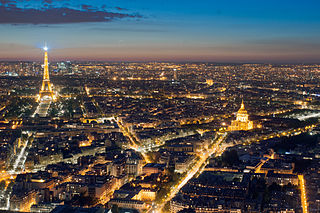
The 7th arrondissement of Paris is one of the 20 arrondissements of the capital city of France. It is known for being, along with the 16th arrondissement and the commune of Neuilly-sur-Seine, the richest neighbourhood in France. In spoken French, this arrondissement is referred to as le septième.

The 15th arrondissement of Paris is one of the 20 arrondissements of the capital city of France. In spoken French, it is referred to as le quinzième.

Bir-Hakeim is an elevated station of the Paris Métro serving line 6 in the Boulevard de Grenelle in the 15th arrondissement. It is situated on the left bank of the Pont de Bir-Hakeim over the Seine and is the closest station to the Eiffel Tower. After being built in 1906 as "Grenelle", it was renamed together with the bridge to commemorate the World War II battle of Bir Hakeim. The signs on the station walls now say "Bir-Hakeim — Tour Eiffel".

Charles Michels is a station on Line 10 of the Paris Métro. It is located in the 15th arrondissement.

Galeries Lafayette is an upmarket French department store chain, the biggest in Europe. Its flagship store is on Boulevard Haussmann in the 9th arrondissement of Paris but it now operates a number of locations in France and other countries. In 2019, Galeries Lafayette recorded earnings of over five billion euros. It is a part of the company Groupe Galeries Lafayette and has been a member of the International Association of department stores since 1960.

Champ de Mars–Tour Eiffel station is a station on RER C in Paris named for the nearby Champ de Mars and Eiffel Tower.
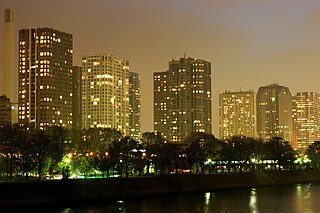
Front de Seine is a development in the district of Beaugrenelle in Paris, France, located along the river Seine in the 15th arrondissement at the south of the Eiffel Tower. It is, with the 13th arrondissement, one of the few districts in the city of Paris containing highrise buildings, as most have been constructed outside the city.

The Louvre Saint-Honoré building is a historic structure in Paris, occupying an entire urban block between the rue de Rivoli, the place du Palais-Royal, the rue Saint-Honoré, and the rue de Marengo, with a total floor surface of 47,000 square meters. It was originally erected in the early 1850s by the Pereire brothers who in 1855 opened an iconic hotel, the Grand Hôtel du Louvre, and an innovative street-level department store, branded from 1863 the Grands Magasins du Louvre. While the Grand Hôtel closed in 1887, the Grands Magasins expanded and kept operating in the building until 1974. From 1978 to 2016 they were succeeded by a specialized mall of antiques shops, the Louvre des Antiquaires, while the upper floors were repurposed as rented office space. Since 2020, the building's lower levels have been undergoing conversion to become the new flagship home of the Fondation Cartier pour l'Art Contemporain.
The Australian Embassy in Paris is located 400 metres southwest of the Eiffel Tower, on Rue Jean Rey in the 15th arrondissement of Paris, near the Bir-Hakeim bridge on the Seine. The embassy is situated on a triangular shaped block, and comprises a pair of nine-storey buildings. The Chancellery Building houses Australia's missions to France, to UNESCO and to the OECD, and the apartment of the ambassador to France; the other building contains 34 staff apartments, all with views of the Seine and the Eiffel Tower.

Tour Generali was a skyscraper planned for construction in the business quarter of La Défense in Courbevoie.

The Palais des congrès de Paris is a convention centre, concert venue, and shopping mall at the Porte Maillot in the 17th arrondissement of Paris, France. The venue was built by French architect Guillaume Gillet, and was inaugurated in 1974. Nearby the venue are Bois de Boulogne and the affluent neighbourhood of Neuilly-sur-Seine. The closest métro and RER stations are Porte Maillot and Neuilly–Porte Maillot, accessible via the lower levels of the building.

Tourism in Paris is a major income source. Paris received 12.6 million visitors in 2020, measured by hotel stays, a drop of 73 percent from 2019, due to the COVID-19 pandemic. The number of foreign visitors declined by 80.7 percent. Museums re-opened in 2021, with limitations on the number of visitors at a time and a requirement that visitors wear masks.
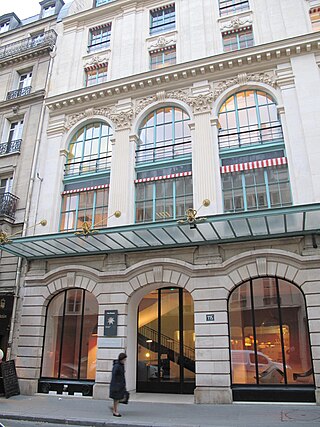
Valode & Pistre is a French architecture firm based in the 7th arrondissement of Paris, with branches in Moscow and Beijing.
Gecina is a French real estate group that owns, manages and develops property holdings worth 20 billion euros by end-June 2020, with nearly 97% located in the Paris Region. Gecina is a French real estate investment trust (SIIC) listed on Euronext Paris and employs nearly 500 people. The Group's business is built around the leading office portfolio in France and Europe, alongside residential assets and student residences, with over 9,000 apartments.
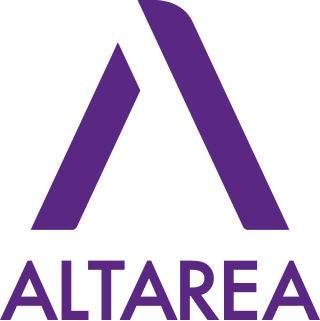
Altarea SCA is a French company dedicated to the development and investment in real estate, especially shopping centers. Its headquarters are located in France, with subsidiaries in Spain and Italy. It was founded in 1994.
EuropaCity was a French planned development outside Paris, initially scheduled to open in 2027. It was a joint project by the French real estate company Immochan and the Chinese investment company Dalian Wanda. It was introduced to the public as a planned 800,000 square metre cultural, recreational, and retail development to be located in the Triangle de Gonesse in Ile-de-France north of Paris. The main purpose of the project was to combine dense urban development with open space. The international invited competition for its design was won by the architectural group Bjarke Ingels Group, announced in spring 2013. Due to controversies on the project's environmental sustainability and local opposition, the French government withdrew its support on 8 November 2019, and the project was abandoned.
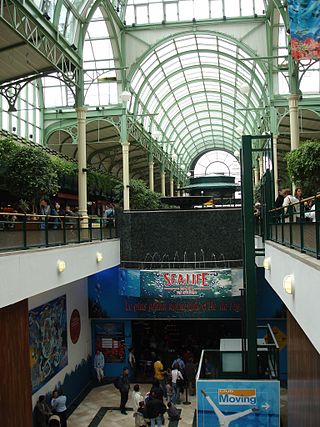
Val d’Europe is a shopping mall located 30 minutes to the east of Paris, the French capital and 5 minutes from the Disneyland Paris theme park and the Villages Nature holiday village.
















